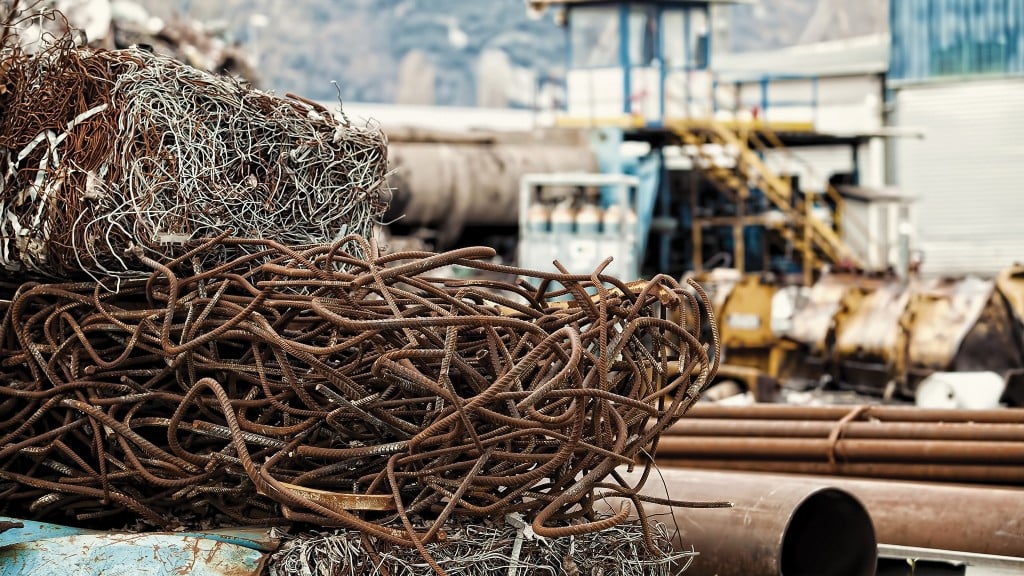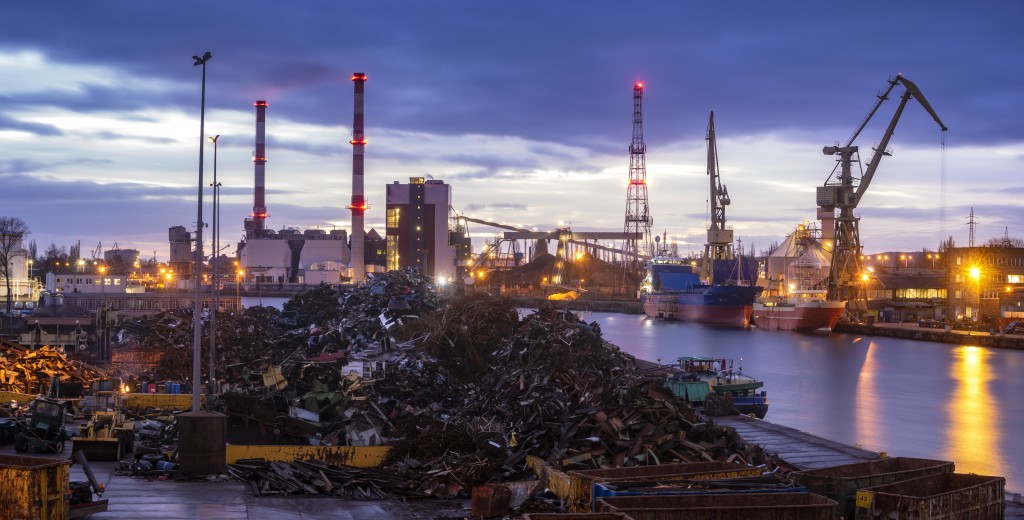
Steelmakers and ferrous metal recyclers experienced unprecedented market conditions in 2021 as U.S. steel prices set all-time records, steel production capacity continued to expand, and scrap processing volumes rose sharply. How- ever, the impacts of the COVID-19 pandemic on public health, worker availability, supply chains, transportation networks, and virtually every aspect of society have also caused significant market disruptions.
As commodity and asset price volatility ramped up in early 2022 amid concerns about rising inflation, expected interest rate hikes, and heightened geopolitical risks, global steel market sentiment has recently softened but remains largely positive for the balance of the year in light of positive economic and commodity market forecasts.
Steel market sentiment slips in January
According to the latest report from IHS Markit, the Global Steel Users Purchasing Managers Index (PMI) declined from 51.6 in December to 50.1 in January. While PMI readings above 50 indicate continued expansion, steel user survey respondents indicated output levels and new orders weakened at the start of the year.
According to IHS Economist Usamah Bhatti, "Companies often indicated that activity and demand had been hindered by the rise in COVID-19 cases due to the Omicron variant, as well as ongoing material shortages and supply chain disruption. That said, there were signs that supply and price pressures were easing."
At the same time, prices for U.S. finished steel and recycled ferrous metal were pressured lower at the start of 2022, albeit from elevated levels. Back in early 2021, Fastmarkets reported that their U.S. hot-rolled coil price index reached a 60-year high of $1,160 per short ton. The Fastmarkets HRC price index would subsequently climb to more than $1,900 per ton over the course of 2021, shattering previous records.
At the start of 2022, that same index was back down below $1,200 per ton, a significant drop from the highs reached in late 2021, but still lofty by historical standards. Ferrous scrap prices have been on a similar, if more range-bound, trajectory as producer prices for recycled iron and steel were still up 38 percent year-on-year in December 2021, before retreating in January and February, particularly for prime scrap grades. According to Argus Media, "Canadian domestic prime scrap prices dropped C$36 per ton in January, with concerns mounting over cross-border trucking disruptions."
Shifting market structure
The current ferrous market rebalancing should not come as a complete surprise as the gains registered in 2021 would be difficult to sustain over an extended period of time. Following the COVID-induced contraction in 2020, total U.S. steel production increased 18 percent last year to 86 million metric tons while North American steel production increased 16.6 percent in 2021 to 117.8 million metric tons, according to World Steel Association figures. ISRI estimates U.S. recycled iron and steel consumption similarly increased to more than 58 million tons last year.
On the trade front, U.S. exports of recycled iron and steel increased 5 percent by quantity in 2021 to nearly 16.7 million metric tons, but surged 60 percent higher in dollar terms to $6.8 billion due to last year's price gains. U.S. exporters saw improved demand from key growth markets including Vietnam, South Korea, and Egypt.
Of note, U.S. recycled iron and steel shipments to Latin America rose more than 50 percent in 2021 due to improved demand from Mexico, Peru, Ecuador, and Brazil, while exports to mainland China more than tripled to 115,000 metric tons, according to Census Bureau trade data.
The increases in domestic and global steel and scrap demand, coupled with elevated labour, transportation, and operating costs, contributed to the acceleration of two key market trends that were already underway: new capital investments and industry consolidation.
In the United States alone, the major steelmakers have announced capital expansion plans that will increase steel production capacity by more than 10 million tons between 2022 and 2024. Meanwhile, the metal recycling industry is seeing increased integration, both horizontal and vertical, including multi-million-dollar acquisitions of major processors PSC Metals, Ferrous Processing and Trading, and MetalX's ferrous scrap unit in the last year.
Challenges and opportunities going forward
For metal recyclers, one of the biggest challenges this year will be the continued competition for available workers. According to the Census Bureau's latest survey on Job Openings and Labor Turnover, there were more than 10.9 million unfilled U.S. job openings in December 2021, the seventh consecutive month with over 10 million openings.
In addition to having to raise wages in order to attract and retain new talent, recyclers are also faced with rising energy and operational costs as one measure of inflation - the Consumer Price Index reached a 40-year high in January. As central banks raise rates as part of their efforts to finally contain inflation, borrowing costs will increase, raising the bar for capital investment projects. Last but not least, logistical bottlenecks are not expected to go away anytime soon, which will continue to act as a drag on firms' ability to get material to customers in a timely manner.
More positively, the global economy and international trade flows are still expected to expand in 2022. According to the latest International Monetary Fund forecasts, the global economy is projected to expand 4.4 percent this year while the global trade in goods and services is forecast to increase 6 percent.
In the United States, the $1.2 trillion infrastructure spending package and ongoing metal production expansion plans also bode well for recycled commodity demand. Over the longer run, economic growth, steel output, and recycled metal demand are likely to remain closely connected.
Joe Pickard is the chief economist and director of commodities at the Institute of Scrap Recycling Industries (ISRI) located in Washington, D.C.


